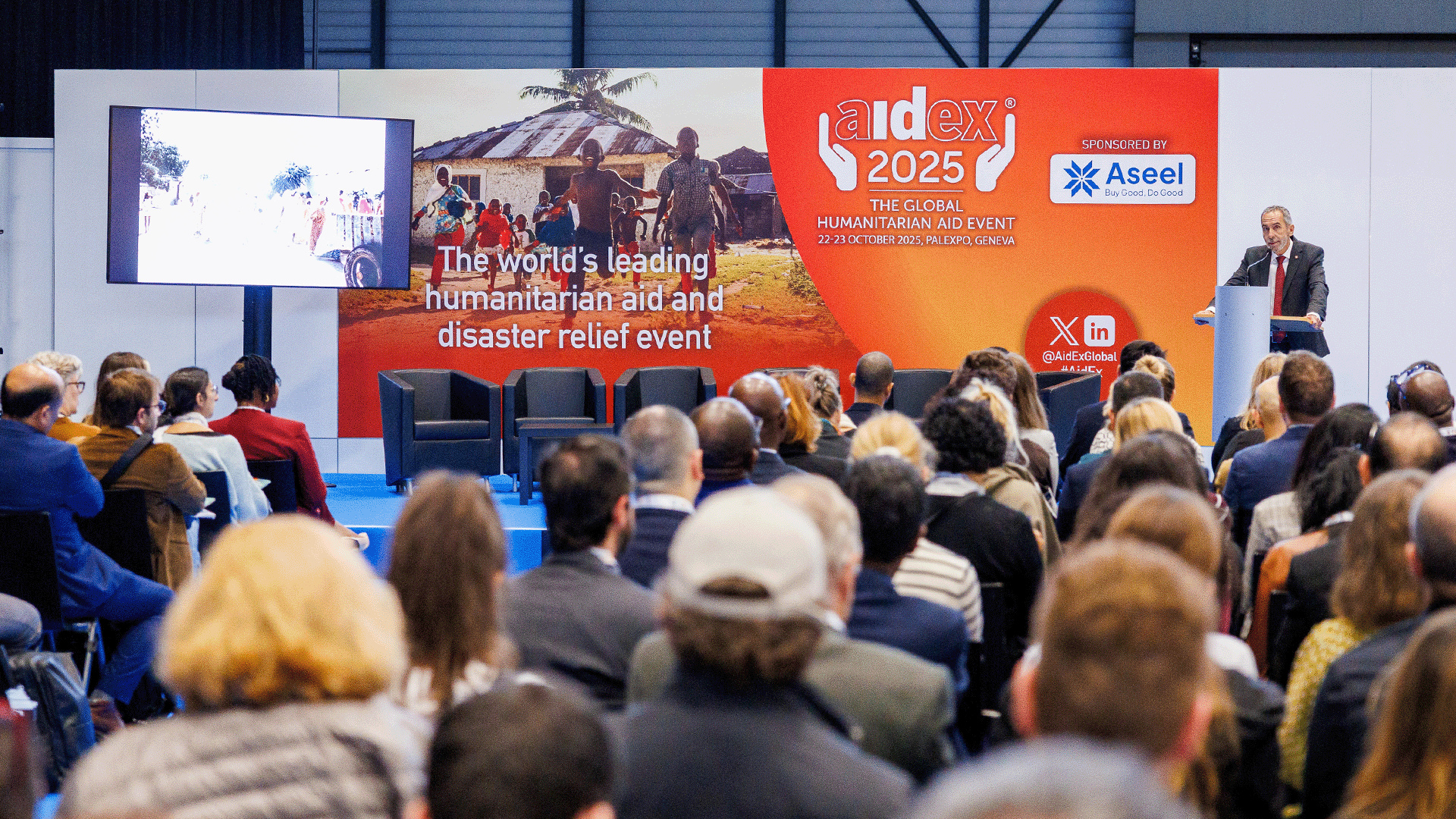AidEx, held each year in Geneva, is the world’s largest international event for the aid and disaster relief community. With speakers and panels addressing topics including redesigning the humanitarian agency and reimagining the humanitarian supply chain, one of the throughlines of this year’s event was the global withdrawal of foreign assistance and how to ensure continuity of services given the growing resource constraints.
I had the honor of hosting a panel on technology’s role in cost-effective duty of care at the AidEx 2025 conference. My guests were two Dataminr partners: Jess Torp, Head of Safety and Security Coordination at the World Intellectual Property Organization (WIPO) and a veteran of UNICEF and the World Food Programme, and Fabien Leimgruber, Head of Cyber Resilience at CyberPeace Institute (CPI), a global nonprofit supporting NGOs with free cybersecurity assistance and advocating for a safe and secure cyber space.
Below are some of the key insights from this meaningful discussion.
The increasing (and converging) risks of delivering aid
We are living in a moment of increasing precarity. With climate crises, armed conflict, and cyber threats on the rise, humanitarian agencies find themselves stretched ever thinner in their ability to respond to needs on the ground and to deliver on duty of care obligations—protecting staff and beneficiaries—as they do so.
Demands on humanitarian security are not just increasing in scale, but in complexity. Historically, cyber and physical security were treated as two separate domains: one the purview of IT, the other, the responsibility of professionals with deep experience in high risk environments. But these theaters of risk are merging. Today, a raid on UN offices results not only in the detention of—and physical risk to—staff, but in the confiscation of laptops and potential unauthorized access to highly sensitive humanitarian data. It works in the reverse, too, when digital threats—such as mis- and disinformation—put local and international aid workers in the crosshairs.
People, process, and (the thoughtful use of) technology
Technology presents both an opportunity and an expanding digital risk surface for humanitarian aid and duty of care operations. While AI can serve as a force-multiplier, particularly valuable in a funding crisis, providing speed, scale, and preemptive defense, not all technology is suitable for the humanitarian security context. Thoughtful deployment is key.
Built-for-purpose vs. all-in-one
All-in-one security solutions—those that provide event, threat, and risk intelligence, verification and analysis, two-way communications, evacuation services—can seem like a quick way to simplify operations and reduce staffing needs when resources are limited. WIPO’s Head of Safety and Security Coordination Jess Torp pointed out that this can be counterproductive for humanitarian organizations with different risk-tolerance levels than those for which commercial, often expensive all-in-one solutions are generally built.
Instead, Torp advocated for built-for-purpose solutions that meet the unique needs of a given humanitarian organization. By partnering with Dataminr, WIPO has access to our AI-powered real-time event, threat & risk intelligence to receive the earliest possible indication of an event or emerging risk (far faster than human staff could detect). However, it still depends on its security team to conduct impact analyses and make critical decisions about how to respond to threats. Other technology solutions—for example, two-way communications platforms—are also required, and procured from companies with the relevant core competency. This makes interoperability of technologies another key consideration in building your humanitarian security tech stack.
Humans in the loop
As hinted above, another theme in our conversation was the need to consider people and process in designing humanitarian security operations. Technology is only one leg of the stool.
While WIPO depends on security staff to validate and interpret raw intelligence within the specific context of their operations, CPI’s Head of Cyber Resilience Fabien Leimgruber spoke about the mission of his organization’s CyberPeace Builders program, a network of cyber volunteers with the aim to protect the vulnerable, to shield the critical services that nonprofits provide, and to bridge the growing cybersecurity talent gap.
For target-rich, cyber-poor nonprofits with increasingly-stretched budgets, hiring or retaining cybersecurity experts is a massive challenge. They need humans in the loop to help make sense of the ceaseless flow of cyber threats and vulnerabilities, and how to prioritize them. This month, Dataminr is proud to join the ranks of other tech firms helping to bridge this gap through the CyberPeace Builders program.
Locally-centered solutions
According to a May 2025 UN Security Council report, “2024 was the deadliest year on record for humanitarian personnel. More than 360 humanitarians were killed…[while] national and local aid workers remained the most vulnerable.” Of the 54 humanitarian personnel killed in Sudan, all were recruited locally.
National and local humanitarians continue to carry disproportionate risk and are thus critical stakeholders (and team members) in developing effective duty of care processes and the technologies which support them. Local, in-language data sources—including newspapers, radio, social media, and mapping—are critical to providing ground-truth awareness, while key features like low-bandwidth options are must-haves to ensure accessibility for local staff.
The Breadth and Diversity of Dataminr’s Public Data Sources
- More than 220 countries and territories covered in over 150 languages
- Over 1 million unique public multi-modal data sources, including text, image, video, sensors, and audio
- More than 43 terabytes of text processed every day
Cybersecurity strategies designed to address confidentiality, integrity, and availability (the CIA triad) must also be adapted to local needs. For example, humanitarian organizations must ensure local staff devices are properly secured should they be detained and hostile actors attempt to access sensitive data.
Dataminr for Nonprofits offers free and discounted access to our event, threat & risk intelligence solutions, so humanitarian organizations can know first, act faster and better serve the world’s most vulnerable—all while keeping aid workers safe.

Dataminr for Nonprofits
Visit our Dataminr for Nonprofits page to learn more about our programs and to apply for your free licenses.
Learn More



